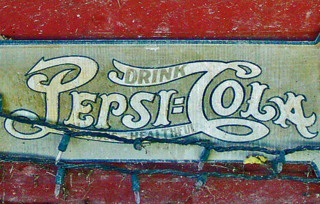Photo Credit: Don O’brien
Pepsi’s 2013 challenge
In the 1970’s the Pepsi Challenge was all the rage. The soda maker’s ad campaign took on competitor Coca Cola directly with person-on-the-street taste testing, highlighting of course only those tasters who chose the company’s products over Coke’s.
But now it looks like Pepsi has lost a real challenge to Coke, in a big way. According to testing by our organization, the Center for Environmental Health (CEH), Pepsi products nationwide contain high levels of a cancer-causing chemical – more than a year after Pepsi announced it would eliminate this chemical from its products.
The background to our testing goes to March 2012, when both Coke and Pepsi pledged to change their caramel coloring, a major ingredient in all colas. It turns out that the process of making industrial-strength caramel coloring, unlike the natural caramel you make at home simply by cooking sugar, creates a toxic chemical by-product called 4-methylimidazole (4-MEI).
Cancer-causing chemicals in soda
When California added 4-MEI to the list of chemicals known to cause cancer, Coke and Pepsi had a dilemma. The companies could keep using their tainted coloring, but then they would be required to place a cancer warning on their products sold in California.
They figured that most people don’t want to drink cancer-causing cola, so instead of labeling they chose to get their suppliers to change the way they make caramel coloring, so it no longer contains 4-MEI. In March 2012, both companies announced their 4-MEI-free sodas would be available in California first, and shortly after in the rest of the country.
CEH tests soda samples
At that time, CEH had already tested some colas from the companies, and our testing appeared to validate the companies’ claims that they were in the process of making safer soda available in California. Late this spring we decided to do more testing to check on the companies’ progress. We tested Coke and Pepsi purchased in California, and found both companies in compliance with the state safety law.
Then we asked CEH supporters in ten other states to send us Coke and Pepsi from their store shelves. Our intrepid shoppers responded and soon we had an office full of well-traveled sodas! We sent the products to an independent lab, and the results were shocking: all ten Pepsi
products from outside California still contained high levels of 4-MEI. By contrast, it appears Coke successfully reformulated its products: our tests found nine out of ten Coke products were made with safer caramel coloring.
How much of the cancer-causing ingredient did we find in Pepsi’s products?
Based on California standards, a soda drinker who has just two Pepsi’s a week would exceed the state safety limit – an alarming statistic, given that a recent Gallup poll found that the average American soda consumer drinks 2.6 sodas every day! For the Pepsi with the most
4-MEI, you’d only need to drink it once a week to exceed the state safety limit.
Pepsi’s explanation for being so far behind Coke on providing safer soda was….well, actually, the company hasn’t offered an explanation. They did say they would have cola without 4-MEI available throughout the US – in another eight months!
What’s next
We think there’s no excuse for Pepsi to keep selling soda with a cancer-causing coloring. If you agree, you can send Pepsi’s CEO a message to urge her to move more quickly on this, for our children’s health!
Our work also sheds light on the critical value that state laws can bring in influencing companies to make safer products, not just for one state but nationwide. Though there is no national rule on 4-MEI, Coke was able to make the safer product widely available –with no change in price, taste, or color.
Right now, a Senate proposal on national chemical policy, as drafted, could disrupt this power of state laws. For decades states have been early adopters of policies to protect us from harmful chemicals, often years ahead of federal regulators. That’s why we are urging the Senate to strengthen and amend the reform bill, and create national chemical safety rules that put our children’s and families’ health first.




